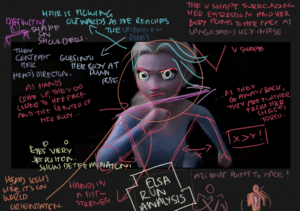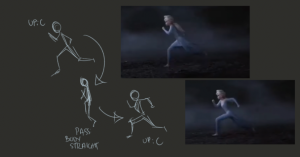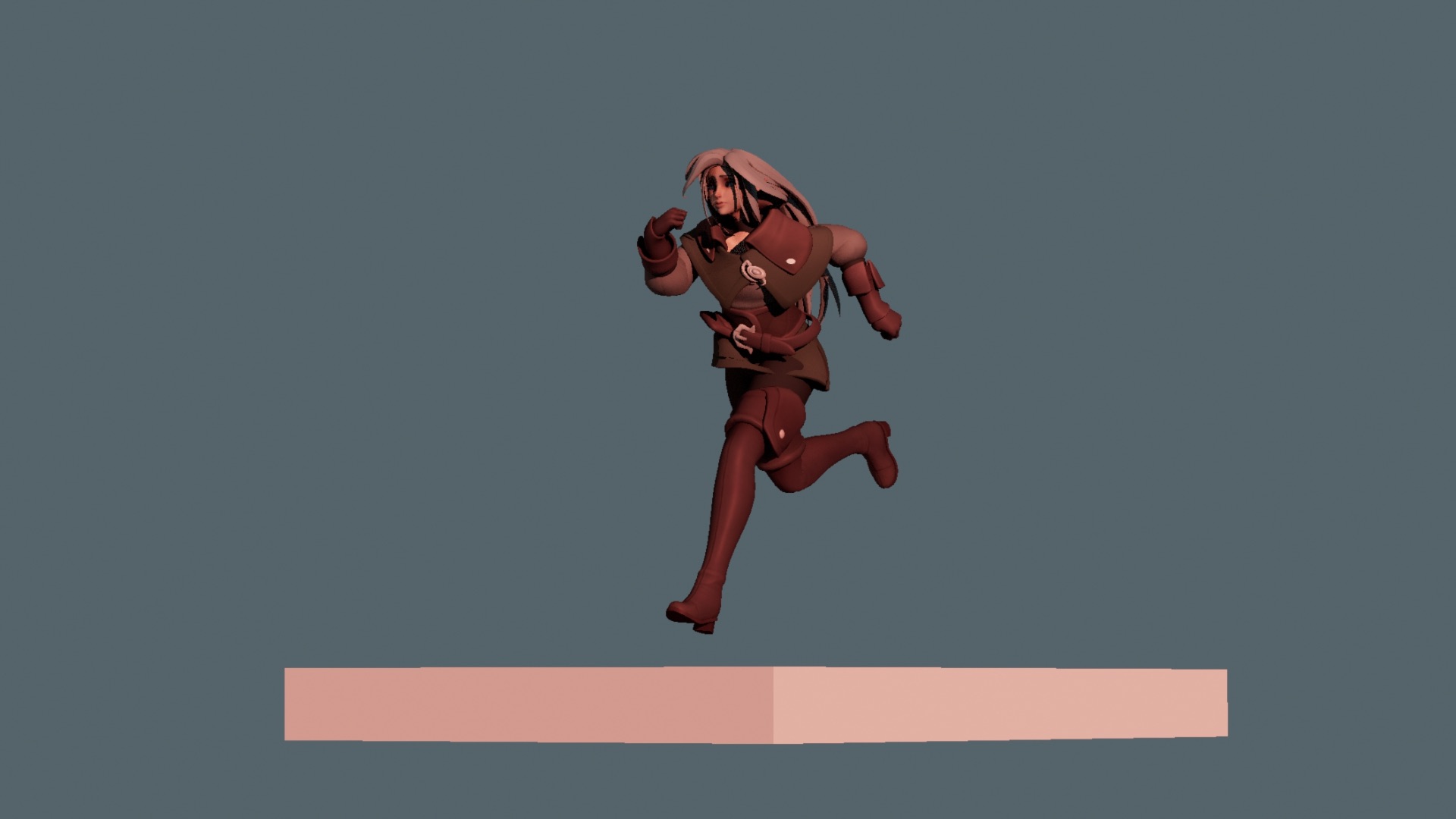I looked at this shot of Elsa running in Frozen II in great detail for my run cycle, and approached it in the same way Lango said to approach an animation – by analysing its pose. Elsa is confident, determined, yet also in great danger and that’s clearly portrayed both in expression and pose – the animator presents this with use of a forward ‘C’ in her body. I wanted the same for my animation. Here, I imagine Azri is running away from enemies who have her on her tail. She’s looking back, maybe freaking out a bit, but she knows how to run well. She’s a skilled warrior. She’s sure of herself and not giving up.


Additionally, I used Alec’s Jack rig reference and Richard Williams’ run cycle as a guide in Maya.

I also watched the Frozen II documentary which gave me a good insight into the animation process. The key thing the animators did when they got a specific shot was video themselves based off the script. Therefore I videoed myself running as I’d imagined, which was super helpful as I knew fully my own movements and was able to pick up on them easily when referencing.
This was my first pass/initial blockout:
At this stage I was very much taking what I had learned from Animator’s Survival Kit, but this begged a lot of questions. Richard Williams is very adamant of the contact pose in his runs being heel-to-toe, but in 3D space such as Maya this does encourage an element of snapping/breaking in the knee that looks quite jarring. I also practised a lot of running myself and found I don’t run heel-to-toe, at least not in the way I walk heel-to-toe. So, in following passes, I diluted this and made it more of a mid-heel to toe. Of course Azri is wearing massive heals so toe-to-heel would not be applicable, but I found doing it this way resulted in a much smoother run cycle.
The timing of my run also seemed off, it felt way too fast. I therefore adjusted my frames to match closer the Elsa run, starting on 2s instead of 1s. Richard Williams’ pose between the Up and Contact was also an interesting one. I felt that when I added a similar pose at that point, it felt too slow at the jump. So much so it was beginning to feel more like jumps than a run. I noticed the Jack reference did not have this pose. I had tried it without, but it went the other way. It felt too fast. So, I compromised by making this pose a distinct in-between later.

Furthermore, I noticed that there was a snapping happening in my run. I remembered feedback I had learned in the Berkeley class about the contact pose, so I moved the contact position back by a frame, and immediately it flowed more with the general movement (especially as she’s effectively on a treadmill and her legs are always going to be moving forward or backwards at any given point, even subtly).
New ‘Contact’ Pose

I also used Wade Neistadt’s video on the Azri rig where he describes how you can either world orientate or local orientate body parts. I found world orientating the head really amplified the pose and its focus towards the head – as Lango stressed.
Referring to the Elsa shot is also what made me decide that the hands were better closed in this instance, as it carries a profound sense of confidence and skill that I believe is what makes the Azri model appealing.
The hair did prove to be very difficult, much like in the body mechanics exercise, but I used skills/advice I had got from the Birkeley class in terms of S and C curves on the fox jump. I looped this and it worked quite well, although I would like to play with other – perhaps more optimised – rigs in the future.
Also inspired by the Elsa pose, I added expression to her face to round out the storytelling intent I had for my animation. The key element of that shot was the V-shaped eye-brows. I added a transition to this to represent a story. She is transitioning from fearful and doubtful (upwards eyebrows) to determined and confident like Elsa. I emphasised this transition by having the eyebrows go further up as she rose, and then falling downwards as she fell.


See my polished animation on Syncsketch.
I was very pleased with the end result, I think out of all three the run felt the most rewarding. I worked hard on getting rid of any snapping, and I also think secondary animations such as her hair and her belt created a solid sense of weight. I also found her expression worked well and complimented the run, adding a good sense of character.
References
Williams, R. (2001). The animator’s survival kit. London: Faber And Faber.
Thomas, F. and Johnston, O. (1995). The Illusion of Life. Disney Editions Deluxe.
Frozen II. (2019). [Animation] Los Angeles, California: Disney Animation Studios.
Into the Unknown: The Making of Frozen II. (2020). [Documentary] Los Angeles, California: Disney Animation Studios.
Sir Wade Neistadt, YouTube. (2019). Exploring a FREE Animation Rig: AZRI. [online] Available at: https://www.youtube.com/watch?v=M8Pp-3loZ1g [Accessed 6 Jan. 2023].
